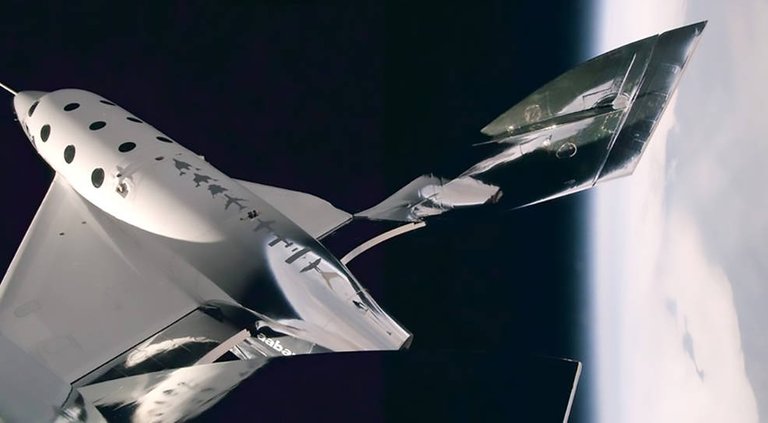Recently we have seen what represents a milestone in the space race, the rivalry between several companies to be the first to initiate space tourism on a large scale already had a winner, Virgin Galactic of Richard Branson surprised everyone with the flight of a space plane that reached the limit of the Earth's atmosphere, just a few days after Blue Origin, of Jeff Bezos, made its maiden flight aboard the New Shepard rocket, with which they managed to reach the imaginary line that separates the Earth's atmosphere from outer space.

Virgin Galactic spaceship two. Source: NASA.
But beyond the fact that these companies have made the promise of "democratizing space", these first flights have only represented huge marketing campaigns, since we must begin by saying that the cost of a ticket to space can only be afforded by a minority and that it is also an activity with a great environmental impact.
Perhaps we can believe that what happens in space does not affect us, but that is far from reality, in the midst of this pandemic we have realized what the decrease in international flights and terrestrial mobility represents for the environment, so we see that people are discovering that we must make a more just ecological transition. But space tourism is an emerging activity that has a very high energy cost, not very accessible and very polluting.
First of all, overcoming our gravity and reaching space has a very high energy cost, it is enough to see the liftoff of a mission to realize the tons of fuel that are burned in a few minutes. And we are well aware that burning fuels is among the main causes of climate change, so reaching space has a large carbon footprint associated with it.

New Shepard launch. Source: NASA.
For example, the release of combustion gases in the upper atmosphere has negative effects on the ozone layer, and even seemingly innocuous water vapor can contribute to the greenhouse effect.
Although the flights intended as "tourist" flights are suborbital flights, that is, they do not enter into orbit but ascend to 90 or 100 km high for brief moments, enough to experience the lack of gravity, and then fall back down. So they leave a smaller carbon footprint than the takeoff of a mission to a space station or to install a satellite. But we must think that even if the takeoff of 100 rockets a year has less impact than the flight of 100000 airplanes around the world every day, an increase in space activity for tourism purposes could make its environmental impact relevant.
To put it in perspective, it is estimated that a single Blue Origin or Virgin Galactic flight emits between 60 and 90 tons of CO2, which translates into about 10 tons per passenger per flight; which if we compare it with the 4.8 tons of CO2 emitted per person per year on average, we can see that spaceflight has a significant footprint.
So, although the volume of gases emitted by these suborbital flights are not so high when compared to those emitted by larger rocket flights that target different orbits, we must think that it is more necessary at this time for humanity, to deploy satellites that benefit many people, explore space for scientific purposes or that a form of tourism exclusively accessible to a minority emerges. That is to say, at a time when the world is getting on track in the fight against climate change through important agreements, it is unreasonable for a commercial activity to emit in just a few minutes, per passenger, more than twice the amount of CO2 produced by one person per year. This shows us that there are still many people who need to change the way they live with the world.
While space exploration is important for humanity, we should not be blinded by activities that, under the promise of technological development, only benefit a few.
Thanks for coming by to read friends, I hope you liked the information. See you next time.